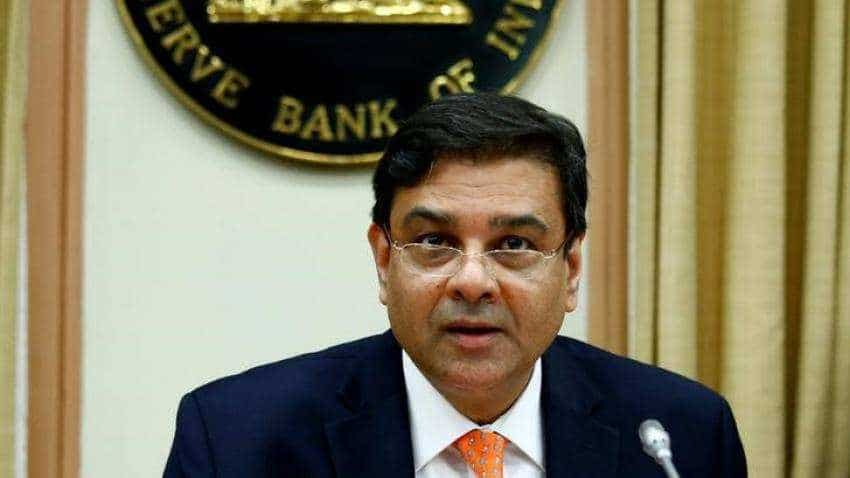RBI Monetary Policy: SLR cut which may be a bitter sweet pill, should release liquidity to banks, says Mahindra Group CFO
RBI had stated several times, that banks are not passing the benefits of reductions in RBI policy repo rate to borrowers.

The Reserve Bank of India (RBI) decided to maintain a status quo in fifth bi-monthlu monetary policy of India, keeping repo rate unchanged at 6.50%. Consequently, the reverse repo rate under the LAF remains at 6.25%, and the marginal standing facility (MSF) rate and the Bank Rate at 6.75%.In December 2018 policy, the limelight was stolen by a series of measures introduced to ensure banks credit growth. A key development by RBI packs some really good news for borrowers! RBI had stated several times, that banks are not passing the benefits of reductions in RBI policy repo rate to borrowers. Well, now banks are trapped, and RBI has brought in a major relief for borrowers.
One of the key development made by RBI was to align the SLR with the LCR requirement, it is proposed to reduce the SLR by 25 basis points every calendar quarter until the SLR reaches 18 per cent of NDTL. The first reduction of 25 basis points will take effect in the quarter commencing January 2019.
As per the existing road map, scheduled commercial banks have to reach the minimum Liquidity Coverage Ratio (LCR) of 100 per cent by January 1, 2019.
Presently, Statutory Liquidity Ratio (SLR) is 19.5 per cent of Net Demand and Time Liabilities (NDTL).
V S Parthasarathy, Mahindra Group CFO believes that SLR cut may have been a bitter sweet pill. However, he is very optimistic on this RBI development.
Parthasarathy says, "The SLR cut which may be a bitter sweet pill, should release liquidity into the banking system. Linking retail & MSME loans to market benchmarks will bring transparency of credit at the grassroots level, which is a very welcome step.”
Talking about the overall policy, Parthasarathy adds, "Data is the Oil for the Digital economy while for the RBI Oil is the Data on which monetary policy is based ! The decline in Crude prices & benign inflation expectations warranted a “status quo”, which was rightly delivered by the RBI. While there was a scope to change the policy stance to “neutral”, the RBI decided to continue with “calibrated tightening” signaling policy consistency & continuity."
With the Rupee and Current Account Deficit under control,Parthasarathy says, "the need of the hour was the restoration of confidence in the financial sector to spur growth."
In Parthasarathy views,the RBI has come out with some well thought out measures to enhance liquidity to the NBFC sector.
Get Latest Business News, Stock Market Updates and Videos; Check your tax outgo through Income Tax Calculator and save money through our Personal Finance coverage. Check Business Breaking News Live on Zee Business Twitter and Facebook. Subscribe on YouTube.
RECOMMENDED STORIES

Retirement Planning: Investment Rs 20 lakh, retirement corpus goal Rs 3.40 crore; know how you can achieve it

SBI Senior Citizen FD Rate: Here's what State Bank of India giving on 1-year, 3-year, 5-year fixed deposits currently

Tamil Nadu Weather Alert: Chennai may receive heavy rains; IMD issues yellow & orange alerts in these districts

Top 7 Mutual Funds With Highest Returns in 10 Years: Rs 10 lakh investment in No 1 scheme has turned into Rs 79,46,160 in 10 years

SIP vs PPF: How much corpus you can build in 15 years by investing Rs 1.5 lakh per year? Understand through calculations

SBI Senior Citizen Latest FD Rates: What senior citizens can get on Rs 7 lakh, Rs 14 lakh, and Rs 21 lakh investments in Amrit Vrishti, 1-, 3-, and 5-year fixed deposits
09:02 AM IST










 RBI, Maldives Monetary Authority sign pact to promote use of local currencies
RBI, Maldives Monetary Authority sign pact to promote use of local currencies RBI cautions public about 'deepfake' video of governor being circulated on social media
RBI cautions public about 'deepfake' video of governor being circulated on social media RBI cancels licence of Vijayawada-based Durga Co-op Urban Bank
RBI cancels licence of Vijayawada-based Durga Co-op Urban Bank  Consumer inflation worsens to 6.21% in October from 5.49% in previous month
Consumer inflation worsens to 6.21% in October from 5.49% in previous month Nearly 98% of Rs 2000 banknotes returned; Rs 6,970 crore worth notes still with public
Nearly 98% of Rs 2000 banknotes returned; Rs 6,970 crore worth notes still with public